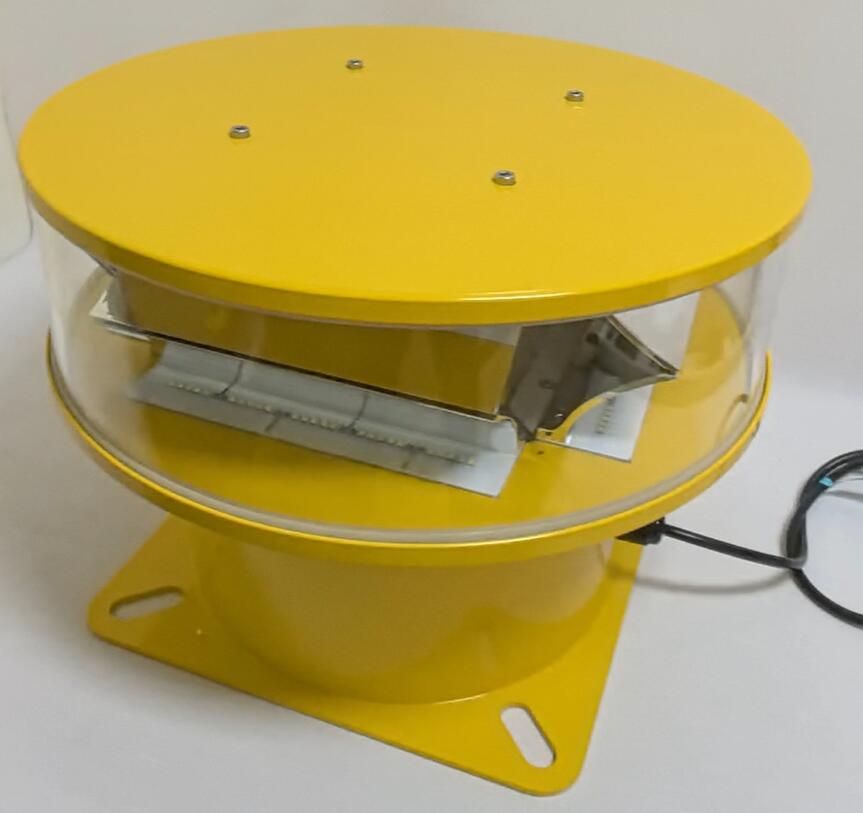Cell Tower Obstruction Light: Ensuring Aviation Safety in the 5G Era
With the rapid global expansion of telecommunication networks, cell towers are reaching unprecedented heights to support 5G infrastructure. This vertical growth makes cell tower obstruction lights an essential safety feature for aviation. These specialized warning systems prevent collisions between aircraft and communication structures, particularly in low-visibility conditions. This article explores the critical role of cell tower obstruction lights, their technical specifications, regulatory requirements, and emerging innovations in the field.
The Importance of Cell Tower Obstruction Lights
As cell towers proliferate—especially near airports and flight paths—proper lighting becomes crucial for:
Preventing Mid-Air Collisions – Ensures pilots can identify tall structures from a distance.

Regulatory Compliance – Mandated by aviation authorities worldwide (FAA, ICAO, EASA).
24/7 Visibility – Operates day and night, adapting to changing light conditions.
| cell tower obstruction lights |
Minimizing Light Pollution – Modern designs reduce glare while maintaining effectiveness.
Types of Cell Tower Obstruction Lights
1. Low-Intensity Obstruction Lights (L-810)
Used for towers under 45 meters (148 feet)
Typically red steady-burning lamps
Common in suburban and rural areas
2. Medium-Intensity Obstruction Lights (L-864)
Required for towers between 45–150 meters (492 feet)
| cell tower obstruction light |
Available in red or white strobe configurations
Often used in urban environments
3. High-Intensity Obstruction Lights (L-856)
Mandatory for towers exceeding 150 meters or near airports
White strobe lights for maximum daytime visibility
Synchronized flashing to avoid pilot confusion
Key Features of Modern Cell Tower Obstruction Lights
LED Technology – Energy-efficient, long-lasting, and low-maintenance.
Automatic Brightness Control – Adjusts intensity based on ambient light.
Remote Monitoring – IoT-enabled diagnostics for real-time status updates.
Corrosion Resistance – Weatherproof designs for harsh environments.
Solar-Powered Options – Ideal for remote locations without reliable electricity.
Regulatory Requirements
Different regions enforce strict lighting standards:
FAA (USA) – Requires compliance with AC 70/7460-1L for tower lighting.
ICAO (Global) – Sets international guidelines under Annex 14.
EASA (Europe) – Mandates synchronized lighting for clustered towers.
Non-compliance can lead to fines, forced tower shutdowns, or increased accident risks.
Installation Best Practices
Proper Spacing – Lights must be placed at specific intervals based on tower height.
Backup Power – Ensures continuous operation during power outages.
Regular Maintenance – Prevents failures due to weather or wear.
Photometric Testing – Verifies light intensity meets aviation standards.
Emerging Trends in Cell Tower Lighting
AI-Powered Monitoring – Predictive maintenance using machine learning.
Radar-Activated Systems – Lights activate only when aircraft approach.
Hybrid Solar-Grid Solutions – Combines solar panels with grid power for reliability.
Drone-Based Inspections – Efficient maintenance checks without climbing towers.
The cell tower obstruction light is a small but critical component in aviation safety, especially as 5G expansion drives taller and denser tower deployments. By adhering to international standards and adopting smart lighting technologies, telecom operators can ensure compliance while minimizing risks to aircraft.
As wireless networks continue to grow, the evolution of cell tower obstruction lights will play a pivotal role in maintaining safe skies for future aviation. Investing in advanced lighting solutions is not just a legal obligation—it’s a commitment to protecting lives and enabling seamless connectivity in our increasingly vertical world.
